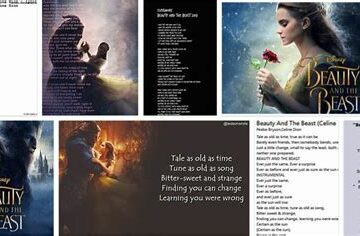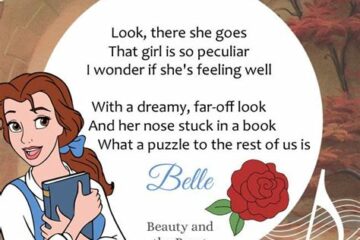The Cultural Significance Of Beauty And The Beast Fairy Tale

The Cultural Significance Of Beauty And The Beast Fairy Tale
Exploring The Cultural Roots Of Beauty And The Beast
The origins of the The Cultural significance in the tale of Beauty and the Beast stretch back centuries, woven into the fabric of diverse cultures that have shaped our understanding of the narrative. At its core, the story revolves around key themes such as transformation, love, and the dichotomy of inner versus outer beauty, which resonate with audiences across different backgrounds.
The earliest known version of the tale can be traced back to ancient Greece, where the myth of Cupid and Psyche shares an eerie resemblance to the iconic story. This narrative, with its emphasis on love conquering superficial judgments, serves as a foundation for the modern interpretations popularized in literature and film.
French author Gabrielle-Suzanne Barbot de Villeneuve published the first printed version of La Belle et la Bête in 1740, later abridged and rewritten by Jeanne-Marie Leprince de Beaumont in 1756. Beaumont’s rendition emphasized moral lessons, illustrating the transformative power of love that defines the tale. The story’s growth through various retellings highlights how The Cultural context has shaped its themes, allowing it to resonate within different eras and societies.
In many cultures, the contrast between beauty and monstrousness symbolizes deeper societal values and the human condition. The character of the Beast can be seen as an embodiment of societal fears and prejudices, while Belle’s eventual acceptance of his true self emphasizes the value of looking beyond appearances. This notion has become particularly relevant in modern discussions surrounding self-acceptance and inner beauty.
Furthermore, the story’s ability to adapt and thrive across various mediums—from literature to animated films and stage adaptations—testifies to its cultural resonance. Each rendition highlights different aspects of the original themes, allowing new audiences to engage with the story through their unique cultural lenses. This adaptability ensures that The Cultural significance of Beauty and the Beast remains palpable and instructive for generations to come.
The Impact Of The Fairytale On Modern Culture
The fairytale of The Cultural significance of Beauty and the Beast extends far beyond its origins, deeply embedding itself into modern culture. With adaptations spanning from ballets to animated films and live-action productions, the story has evolved while maintaining its core messages. These variations show how the tale resonates with different audiences, reflecting the ongoing changes in societal values.
One notable impact is the portrayal of female empowerment. In recent adaptations, Belle emerges as a strong and independent character, challenging traditional gender roles. She longs for adventure and knowledge, setting a precedent for modern heroines who seek their paths. This shift indicates how The Cultural relevance of Beauty and the Beast mirrors contemporary discussions about gender identity and empowerment.
Moreover, the story encourages a re-evaluation of appearance versus inner beauty. In a world often fixated on superficial traits, the fairytale’s central message promotes acceptance and love for one’s true self. This theme has been embraced in various media, encouraging discussions about the pressures of beauty standards and the importance of looking beyond the surface.
Another significant impact is its influence on the arts, inspiring countless creators in fields like literature, film, and theater. The adaptation of Beauty and the Beast into a Broadway musical illustrates how its lyrical depth transcends cultural barriers, bringing this classic narrative into contemporary performance. Each rendition rejuvenates the tale for new generations, ensuring its place in cultural discourse.
Additionally, the integration of Beauty and the Beast into popular culture is evident through merchandise, themed attractions, and even academic discussions. The fairy tale has sparked numerous analyses, showcasing its impact on psychology, marketing, and social theory. Each exploration adds to The Cultural significance of the story, affirming its role as a timeless narrative that continues to invite dialogue and reflection.
Beauty and the Beast holds a considerable role in shaping modern culture, serving as a rich source for discussions on gender roles, beauty standards, and artistic expression. Its adaptability and enduring messages reflect the evolving dynamics of society, affirming its place as a quintessential fairy tale that resonates through the ages.
Lessons In Love: Cultural Messages Of Beauty And The Beast
The fairytale of Beauty and the Beast encapsulates profound The Cultural messages about love, acceptance, and personal growth. At its core, the story promotes the idea that true beauty lies beyond physical appearance, emphasizing the importance of inner qualities such as kindness, intelligence, and empathy. This theme resonates deeply across various cultures, reminding audiences that superficial judgments can lead to misguided perceptions and missed opportunities for connection.
Moreover, the narrative illustrates the transformative power of love. The relationship between Beauty and the Beast challenges the conventional notions of romance, suggesting that love can flourish in even the most seemingly incompatible circumstances. This concept mirrors real-life situations where individuals find common ground despite their differences, fostering a sense of inclusivity and understanding among diverse communities.
Additionally, the story communicates messages of sacrifice and redemption. Beauty’s willingness to take her father’s place as a prisoner in the Beast’s castle exemplifies selflessness, while the Beast’s journey towards compassion and empathy showcases the possibility of personal change. This evolution underscores the belief that love can heal emotional wounds and enable individuals to become better versions of themselves.
The The Cultural messages conveyed in Beauty and the Beast are timeless. They encourage audiences to look beyond the surface, embrace compassion, and recognize the potential for growth through love. This fairytale continues to resonate across generations, affirming its relevance in contemporary discussions about relationships and societal values.
The Cultural Adaptations Of The Beauty And The Beast Tale
The tale of Beauty and the Beast has transcended borders and centuries, leading to numerous The Cultural adaptations that reflect the unique perspectives and values of different societies. From theatrical performances to films and literature, the story has inspired various interpretations that highlight cultural nuances.
In many Western adaptations, the central theme of inner beauty versus outer appearances is emphasized, reflecting individualistic approaches prevalent in these cultures. Disney’s animated film is perhaps the most well-known version, reinforcing ideals of romantic love and personal redemption.
Conversely, Eastern adaptations may focus more on community values and familial bonds. For instance, some adaptations in Asian cultures pivot around themes of sacrifice and the role of familial duty, intertwining the narrative with local mythologies and societal norms.
Literature has also played a crucial role in adapting and reshaping the story. Various authors have penned reimagined versions of the tale, embedding it within contemporary settings that resonate with modern audiences. These adaptations often challenge traditional roles, presenting characters with diverse backgrounds and complex motivations that reflect today’s societal challenges.
In addition, The Cultural significance of Beauty and the Beast extends to stage performances worldwide. From Broadway to regional theater, the story has been revisited through various dance forms and musical interpretations, allowing for a broader exploration of its themes through cultural lenses.
This adaptability signals the story’s universal themes and its capacity to evolve, ensuring its relevance across different cultures and generations. As Beauty and the Beast continues to inspire new adaptations, it highlights the diverse ways in which a single narrative can carry profound meanings for various audiences.
The Cultural Significance Of Themes In Beauty And The Beast
The story of Beauty and the Beast is rich with themes that resonate deeply within various cultures, providing insight into human relationships and societal values. One of the central themes is the idea of inner beauty versus outer beauty. This distinction challenges the superficial judgments often made based on appearance and promotes the understanding that true worth is found within.
Furthermore, the theme of love and redemption plays a pivotal role in the narrative. It illustrates that love has the power to transform individuals and mend broken identities, encouraging individuals to look beyond flaws and embrace the complexities of others. This message is significant across cultures, emphasizing compassion and understanding in relationships.
Another notable theme present in The Cultural framework of this tale is the concept of sacrifice. The characters’ willingness to make sacrifices for one another highlights the importance of selflessness, which is a value appreciated in many cultures around the world. This theme serves to underline that love is not only about receiving but also about giving wholeheartedly.
Additionally, the story includes a theme of personal growth and self-discovery. Both Beauty and the Beast undergo significant transformations, reflecting the cultural idea that challenges often lead to personal development. This journey of growth is relatable to many individuals across different backgrounds, reinforcing the universal appeal of the story.
The themes embedded in Beauty and the Beast extend beyond mere fantasy, becoming significant cultural narratives that promote values of love, sacrifice, and the appreciation of inner beauty. These themes continue to be relevant, allowing the fairy tale to maintain its stature as a meaningful cultural artifact.
Top 10 Disney Characters You Didn’t Know About
December 30, 2024A Deep Dive Into Disney Princesses And Their Stories
December 29, 2024The Meaning Behind Beauty And Beast Lyrics
December 29, 2024Why Beauty And The Beast Is A Timeless Disney Classic
December 29, 2024The Role Of Disney Princesses In Modern Culture
December 29, 2024Exploring The Themes In Beauty And The Beast Lyrics
December 28, 2024
Leave a reply Cancel reply
Recommended
-
Lyrics Beauty And The Beast Céline Dion
August 17, 2023 -
The Evolution Of The Beast Character Throughout The Versions
December 6, 2024 -
Lyrics to Beauty and the Beast
July 7, 2021









